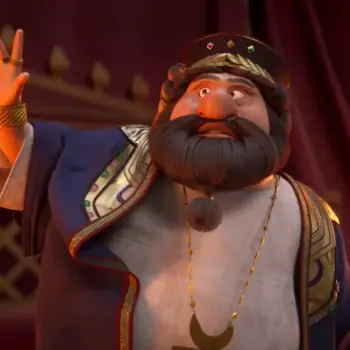 Mel Gibson held a press conference today to discuss his newest movie, the self-financed action epic Apocalypto. The Associated Press reports:
Mel Gibson held a press conference today to discuss his newest movie, the self-financed action epic Apocalypto. The Associated Press reports:
Mel Gibson says a fascination with ancient cultures and great civilizations is what led him to make his upcoming movie “Apocalypto,” starring unknown Mexican actors speaking in an ancient tongue.
“What I’m doing is making an action-adventure film of mythic proportions,” Gibson, sporting a plaid flannel shirt, jeans and a long salt-and pepper beard, told a news conference Friday.
The movie is scheduled to begin production Nov. 14 and will be shot almost entirely in the jungle of Mexico’s Veracruz state.
The film’s stars will be unrecognizable to most moviegoers, and they will speak in the Mayan tongue of Yucateco, Gibson said. It will be light on dialogue and heavy on images and action. It’s set 600 years ago, prior to the 16th-century Spanish conquest of Mexico and Central America.
The most anyone will see of the 49-year-old movie star “is my fingernail,” Gibson said. “If I was in it, it would wreck everything.”
In his first public explanation of the movie, both written and directed by Gibson, he said he decided to hold a news conference “to satisfy people’s curiosity a little bit” and knock down inaccurate speculation.
The movie is “a story about a man and his woman, his child and his father, his community,” adding that the man “is put in an incredibly heightened, stressful situation … has to overcome tremendous obstacles. So it’s a universal story in that respect.”
Like his last film, the stunningly successful “The Passion of Christ,” Gibson will bankroll “Apocalypto” himself. Disney has signed on to release it in the United States.
Gibson said that although he researched the writings of a Spanish missionary and the Mayan bible, the “Popol Vuh,” and visited Mayan sites in Guatemala and Mexico, the Mayan setting is merely the backdrop of the movie. he chose it because “it’s just fascinating to me. There’s still a lot of mystery about the culture.”
“I’m hoping by focusing on this civilization we can … analyze ourselves,” he said, adding that the movie “is kind of an anthropological journey.”
The film’s title, “Apocalypto,” a Greek word for an unveiling or new beginning, “just expresses so well that I want to convey,” Gibson said. “I think it’s just a universal word. In order for something to begin, something has to end. All of those elements are involved. But it’s not a big doomsday picture or anything like that.”
Asked about future endeavors, Gibson replied, “I have many other projects planned. I might just try one in English.”
To this, Reuters adds:
“It’s set before the Conquest, so there are no European faces, and we are using mostly indigenous people and actors from Mexico City,” Gibson, sporting a long beard, said at a news conference in the port city of Veracruz.
“There’s still a lot of mystery to the Mayan culture, but when all is said and done, it’s just the backdrop to what I’m doing — creating an action adventure of mythic proportions,” he said, blinking before a bank of flash lights. . . .
The runaway success of “The Passion of the Christ,” which grossed more than $600 million worldwide, has given Gibson the financial freedom and industry clout to pursue projects like “Apocalypto.”
“Above all, film is a business …Independence is a really cool thing as you can be a bit more bold, and take a few more chances with what you do,” he said.
Gibson said the story would be told through the eyes of a Mayan man, his family and village, and would touch on universal themes about “civilizations and what undermines them,” but he declined to go into details about the plot.
He said Mayan myths from the Popol Vuh sacred texts formed part of his research for the film, which also drew on input from indigenous groups and Spanish mission texts from the 1700s and Mayan language translators.
“A lot of it I just made up, and when I checked it out with historians and archeologists, it wasn’t that far wrong,” he said.
After visiting Guatemala, the Yucatan Peninsula and Costa Rica to scope out locations, he settled on unspoiled jungle in Veracruz to frame the story.
Residents in the rain-swept streets of Veracruz, near where Spanish conquistador Hernan Cortes first made landfall in 1519, gave their support to the project.
“It’s just great that he’s making a film about Mayan culture,” marimba player Manuel Guerrera said as he prepared to play with a local street band in the city’s colonial square.
“It’s a neglected part of our heritage, and it makes us feel really proud,” he added.
Gibson’s popularity in Mexico has been boosted by his recent donation of $1 million to the victims of hurricanes that hit southern Mexico, including heavily Mayan areas.












